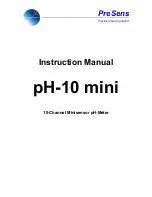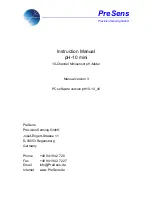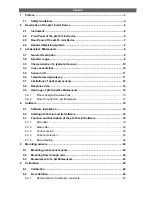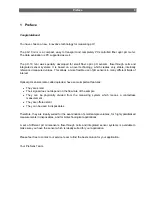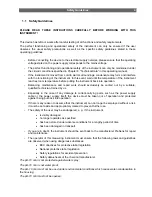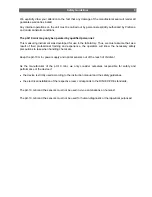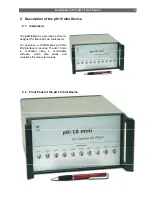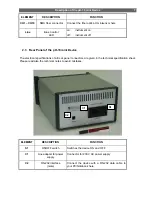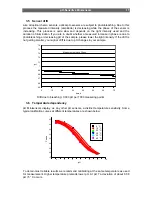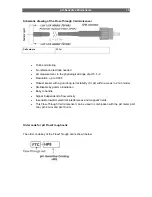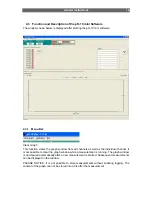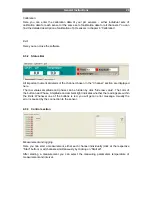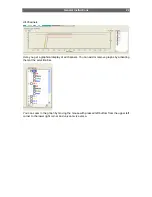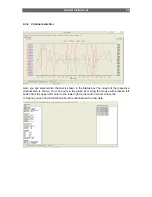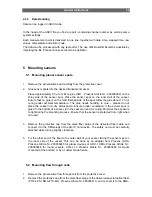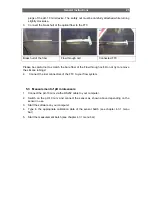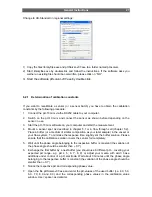
pH-Sensitive Minisensors
12
3.7 Limitations of optical pH sensors
The pH sensors offered for pH-10 mini were specially designed for physiological samples
and media. Samples with extremely low ionic strength and low buffer content may be not
measured. To test whether the sample can be measured accurately, try to perform the
calibration procedure with a buffer system which is as similar to the sample as possible. If the
calibration procedure does not result in a sigmoidal shaped calibration plot, the system is not
suited for the sensor.
The measurement can also be influenced by small, highly fluorescent molecules like
fluorescein or rhodamin in the sample.
The sensors can not be autoclaved, but
γ
-sterilized. They do not stand pH above 9 and
organic solvents.
3.8 Response
time
The response time (t
90
) of the pH sensor is dependent from the diffusion rate of protons
through the sensor layer. Hence, the response time is dependent from the thickness of the
sensor layer and the stirring rate. The typical response (t
90
) time of a pH-sensitive foil is
below 1 minute.
3.9 Housings of pH-Sensitive minisensors
PreSens minisensors are based on 2 mm polymer optical fibers (POF). Depending on the
respective application, PreSens offers a set of different standard designs.
Sensor spots
pH Flow-Through Cell
Of course, it is possible to build customer-specific designs. Please feel free to contact our
service team to find the best solution for your application.

